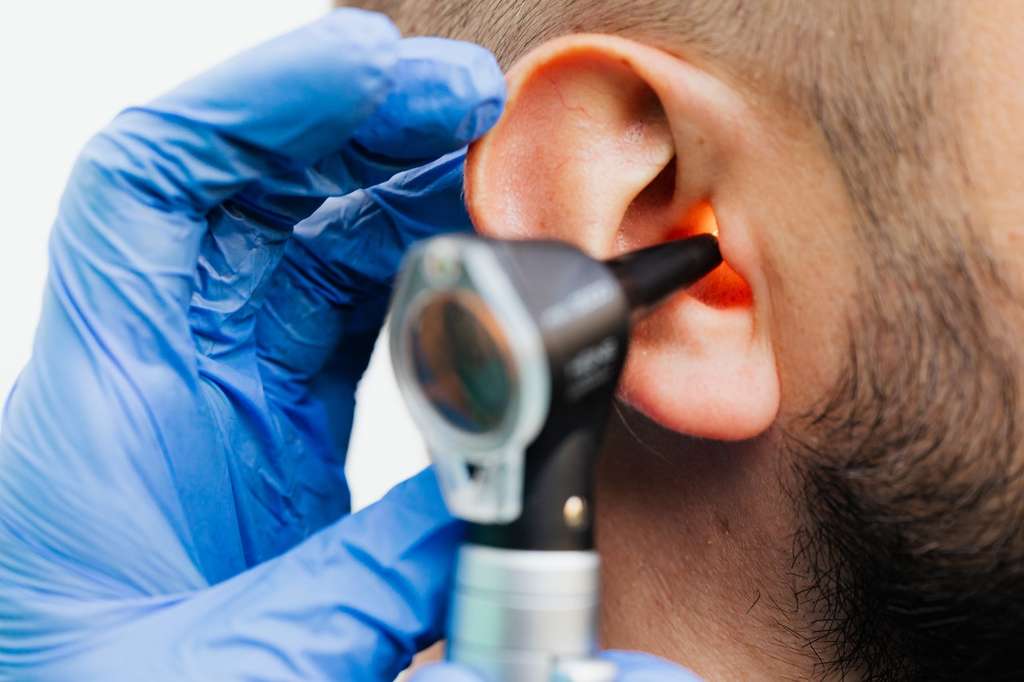Very friendly and super helpful with any questions I had. Very clean and calm atmosphere, all the staff were kind.
Read More
What is Audiometric Testing?
Posted: Apr 29th, 2022 at 12:00AM

In today's modern world, you're exposed to the phenomenon of environmental noise, commonly called noise pollution, every day. As soon as you open your eyes, you're greeted by your alarm tone, cars honking outside, sirens, and maybe even the neighborhood's dogs barking. And it only goes downhill from there once you go out. Whether you're at work, running errands, or even just relaxing at home, chances are there's always some background noise that you can't escape.
While a certain amount of noise is to be expected in day-to-day life, too much noise can be harmful to your health. According to the World Health Organization (WHO), exposure to loud noise can lead to a number of health problems, including hearing loss, tinnitus, and possibly even cardiovascular disease. That's why it's essential that you get regular hearing testing done — to ensure your ears are still functioning correctly and that you're not being exposed to harmful levels of noise.
One type of hearing test you might encounter is audiometric testing. Audiometric testing is one way to assess your hearing health. It can help identify any potential problems with your hearing and help you take steps to protect your hearing in the future.
e7 Health offers audiometric testing, including both tympanogram and acoustic reflex testing. Book your appointment online
What is Audiometric Testing?
Audiometric testing includes a number of different tests that measure your hearing in different ways. These tests can be helpful in detecting any hearing issues and can also be used to track your hearing health over time.
One of the most common tests included in audiometric testing is the tympanogram. This test measures how well your eardrum can vibrate. This test is vital in detecting any problems with your middle ear, such as fluid/wax buildup. It's also used to evaluate the condition of your eardrum.
 Another standard test included in audiometric testing is the acoustic reflex test. This test aims to measure the contraction of your stapedius muscle as it responds to loud sounds. The stapedius muscle helps protect your inner ear from loud noises, and the acoustic reflex test can be used to assess its function. This procedure also helps discover whether there has been damage to any nerve pathways spanning the inner ear to the brain.
Another standard test included in audiometric testing is the acoustic reflex test. This test aims to measure the contraction of your stapedius muscle as it responds to loud sounds. The stapedius muscle helps protect your inner ear from loud noises, and the acoustic reflex test can be used to assess its function. This procedure also helps discover whether there has been damage to any nerve pathways spanning the inner ear to the brain.
Why is Audiometric Testing Performed?
Audiometric testing is often recommended for people who are exposed to loud noise on a regular basis, as it can help identify any damage that has been done to their hearing. Sound is measured in decibels (dB), and anything that produces a sound below 85 dB is safe — though sounds from 80 to 85 dB can already be irritating to the ear.
Any noise that produces a sound that goes over the 85db threshold is considered harmful, and exposure to them can increase your chances of hearing loss.
Audiometric testing can also determine if someone is a suitable candidate for a hearing aid or other type of assistive listening device.
Your doctor might recommend you to undergo a hearing test if you are:
- Experiencing temporary hearing loss or changes in your hearing.
- Working in a job that exposes you to loud noise.
- Applying for a job that requires good hearing.
- Having difficulty communicating with others.
Some occupations that may require regular audiometric testing include:
- Construction workers.
- Factory workers.
- Musicians.
- Air traffic controllers.
 Audiometric testing is also used to diagnose hearing loss in children and newborn babies.
Audiometric testing is also used to diagnose hearing loss in children and newborn babies.
What Should You Expect During an Audiometric Test?
An audiometric test is usually conducted in a soundproof room. You will be asked to sit in a chair and wear headphones, earplugs, or a probe-type device, depending on the type of test being done. The tester will then use the device to make sounds at different frequencies and volumes, and you will be asked to signal when you can hear them. In some cases, you may also be asked to repeat words or phrases that you hear.
The tester or audiologist will record your responses and use them to determine your hearing condition and which frequencies are affected if there are any.
In the case of tympanometry, a probe-type device with a rubber tip will be carefully inserted into your ear canal. You may feel a slight pressure in your ear as the device is inserted, but it shouldn't be painful. The tester will then use the device to measure how well your eardrum responds to the different air pressure changes as you hear different sounds. This test is generally painless and takes only a few minutes to complete.
Acoustic reflex testing may be slightly uncomfortable, as it involves making loud sounds near your ear while measuring the response of your middle ear muscles. This test is usually performed after tympanometry and will take less than 15 minutes to complete.
 What is an Audiogram?
What is an Audiogram?
An audiogram is a graph that shows the results of an audiometric test. This graph plots your hearing ability at different frequencies on the x-axis and the loudness or intensity of those sounds on the y-axis. The audiogram may reveal whether you have conductive hearing loss, sensorineural hearing loss, or a combination of the two.
What are the Risks Associated with Audiometric Testing?
There are no risks associated with audiometric testing as it's usually noninvasive and painless.
How Long Will You Wait for Your Results?
Your results will likely be available immediately after your test, although your healthcare provider may need additional time to review and interpret them.
What Do the Results Mean?
If you have hearing loss, the audiogram will show a dip in your ability to hear sounds at certain frequencies. The severity and type of hearing loss can also be determined from the audiogram. If you don't have hearing loss, your audiogram will be considered "normal."
Receiving a "normal" result after tympanometry means that your eardrum is able to move normally in response to changes in air pressure. An abnormal tympanogram may indicate that there is fluid in the middle ear, a perforated eardrum, or other problems.
If you have any questions about your results, be sure to ask your provider. They will be able to explain what the results mean and how they may impact your life.

I came to E7 health for a physical exam for employment. Staff was very professional, And I was in and out in thirty minutes
Read More
Staff was extremely friendly, I was able to walk in without an appointment.
Read More
Very friendly, informative, and well versed. Felt well taken care of by the doctor and all the staff. Fast, friendly, considerate, all staff met.
Read More
I was here for an employment physical. They are amazing! I was in and out in less than 10 mins.
Read More
J was super helpful. Very quick and easy.
Read More
Rachel was amazing and I was in and out so quick ! Ready to start my new job ! Thanks 🥰
Read More
J was awesome at talking me through my first time getting blood taken. The doctor that also did my physical was quick and very thorough when letting me know the next steps for getting the test results back :)
Read More

















 What is an Audiogram?
What is an Audiogram?